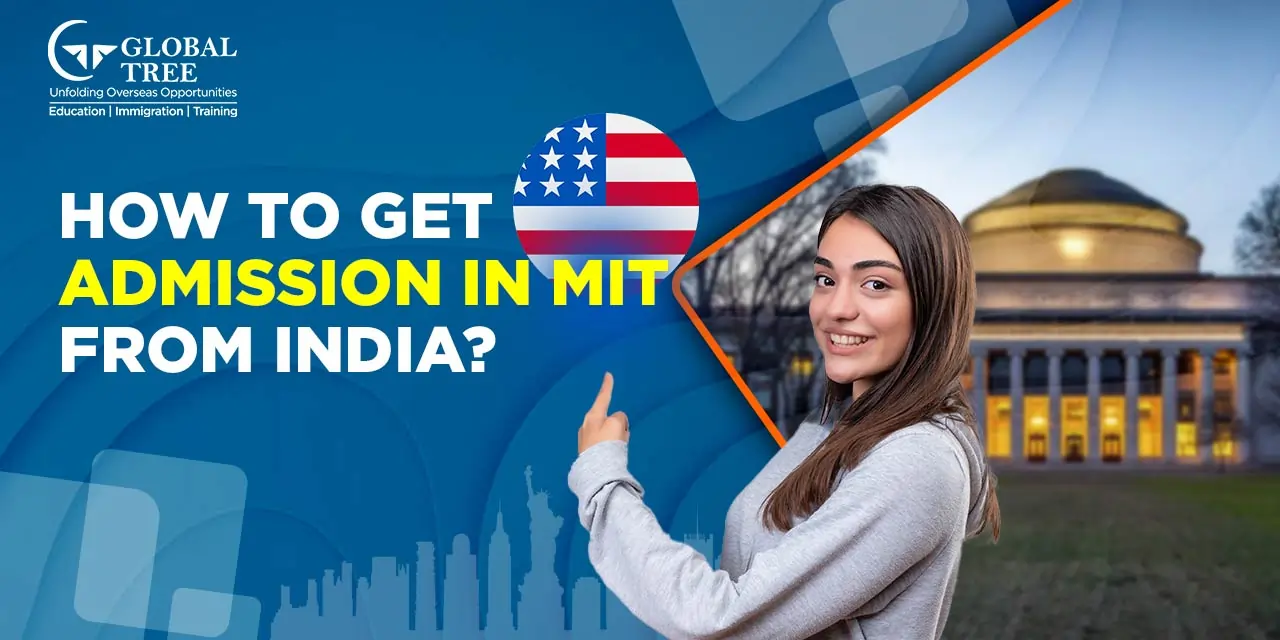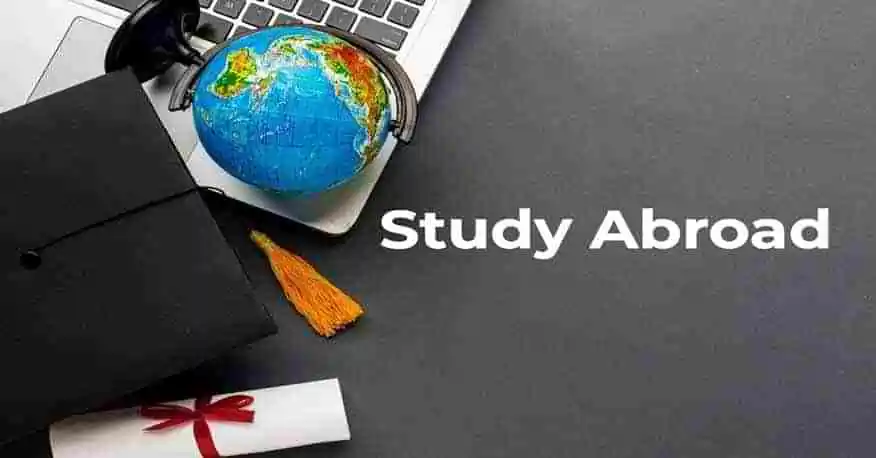How to Get Admission to MIT from India: A Comprehensive Guide

- Massachusetts Institute of Technology (MIT), USA
- Why Study at MIT as an Indian Student?
- What are the top Reasons to Choose MIT?
- How Much does it Cost to Study in MIT USA for Indians?
- Are you Eligible to Study in MIT, USA? Check Here!
- MIT Scholarships for Indian Students in USA
- How to Get Admission in MIT: A Step-by-Step Guide
- MIT Experience for Indian Students
- FAQS - Frequently Asked Questions on How to Get an Admission to MIT
Massachusetts Institute of Technology (MIT), USA
The Massachusetts Institute of Technology, commonly known as MIT, is a beacon of innovation, a sanctuary for exploration, and a realm of academic brilliance. For Indian students harboring dreams of gracing the hallowed halls of MIT, this guide is your compass to navigate the intricate seas of the MIT admission process. Buckle up as we embark on this educational odyssey together.
Why Study at MIT as an Indian Student?
MIT's global reputation as a powerhouse of cutting-edge research and its vibrant faculty-student community make it an unparalleled choice for aspiring Indian scholars. The allure lies not just in classrooms but in the sprawling canvas of groundbreaking projects, the opportunity to connect with influencers in technology, science, and engineering, and the promise of an education that transcends traditional boundaries. MIT is one of the top universities in USA that beckons those with fervor for innovation, a hunger to make a difference, and the audacity to dream big.
What are the top Reasons to Choose MIT?
Unparalleled Opportunities:
- Access to cutting-edge research opportunities.
- World-class faculty and amazing resources.
Innovative Environment:
- Encourages thinking outside the box.
- Embraces unorthodox approaches.
Global Network of Alumni:
- Leaders in their fields.
- Provides valuable career advice and networking opportunities.
Rich Culture & Diversity:
- Vibrant campus life celebrating diversity.
- Students from worldwide backgrounds.
Outstanding Reputation:
- Highly respected degree.
- Opens doors to numerous career opportunities.
(Read More: How to study in the USA after 12th for Indian Students?)
How Much does it Cost to Study in MIT USA for Indians?
For undergraduate degrees, MIT requires Indian students to pay $79,850 annually. Below is a breakdown of the fees in MIT, USA.
| Expenses | Avg Cost |
|---|---|
|
Tuition |
$59,750 |
|
Student Life Fee |
$406 |
|
Housing |
$12,380 |
|
Meals |
$7,010 |
|
Books and Supplies |
$880 |
|
Personal Expenses |
$2,304 |
|
Total |
$82,730 |
Note: These figures represent average expenses and can vary depending on your circumstances.
It's crucial to note that MIT has a robust need-based financial aid policy open to all students, including those from India. In the 2022– and 2023 academic year, MIT awarded a total of $152 million in need-based grants through its MIT Scholarships program, ensuring that education remains accessible. Over 86% of MIT undergraduates graduated debt-free in 2023.
Are you Eligible to Study in MIT, USA? Check Here!
MIT sets academic standards to ensure students can tackle complex issues through analytical thinking and applied problem-solving. General Institution Requirements for international applicants in the USA include:
- Two semesters each of SAT subjects like calculus and calculus-based physics.
- One semester each of chemistry and biology.
Regardless of the chosen field, a well-rounded education is encouraged:
- Solid understanding of mathematics, preferably through calculus.
- One year or more of physics, chemistry, and biology.
- Four years of English.
- Two years of a foreign language.
- Two years of history and/or social sciences.
If your school doesn't offer these classes, supplementing your knowledge through local colleges or virtual classes is recommended.
Test Scores and Extracurricular Activities
Academic excellence, coupled with strong SAT or ACT scores, is imperative for MIT admission. English proficiency, demonstrated through tests like TOEFL or IELTS, is crucial for international applicants. MIT values a combination of academic and extracurricular activities, encouraging students to engage in activities that demonstrate their potential to contribute significantly to the MIT community. The institute emphasizes the importance of authenticity, urging applicants to choose activities that genuinely motivate them.
MIT Scholarships for Indian Students in USA
MIT's commitment to accessibility is evident through its need-based scholarships in the USA. For undergraduate students, MIT offers a one-time grant, and in the 2021–2022 academic year, approximately 58% of undergraduates received some form of aid, with an average amount being $53,997. It's key to remember that MIT’s scholarship sponsors are often interested in learning more about those receiving their donations. Incoming students can also take advantage of the $2000 First Year Grant to cover essential miscellaneous costs associated with their college transition.
For international students, the application process involves:
- Using the CSS Profile to determine eligibility for a need-based MIT Scholarship.
- Submitting parental tax returns or income documentation on the College Board’s secure IDOC platform.
Graduate students at MIT benefit from numerous resources, including:
- Guaranteed Transitional Support.
- MIT Grant for Graduate Students with Children.
- Graduate Student Short-Term Emergency Fund.
- Doctoral Long-term Financial Hardship Funding.
- Childbirth Accommodation and Parental Leave.
- The Graduate Student Council funding for individuals.
- Graduate Student Experience Grants (GSEG).
How to Get Admission in MIT: A Step-by-Step Guide
Step 1: Understand MIT's Expectations
Like every university, MIT strives to bring in a diverse group of students who will enrich the institution. Beyond academics, the university looks for students who have unique talents, experiences, and leadership qualities. MIT wants to find students with an entrepreneurial spirit and a passion for solving real-world problems.
Key Criteria:
- Aligning with MIT’s Mission.
- Collaboration and Co-operation.
- Showing Initiative.
- Taking Risks.
- Creativity.
- Curiosity and Enthusiasm.
- Prioritizing Balance.
- Being a Part of the MIT Community.
These are some of the key components to demonstrate if you want to get admission to MIT from India. With hard work and dedication, you can make your dream of studying at MIT a reality.
Step 2: Understanding the Eligibility Criteria
The next step is to understand the eligibility requirements for the first-year application or the transfer application (as applicable). MIT requires the SAT or ACT scores, and further details on their testing requirements can be found here.
Step 3: Choosing the Right Courses Offered at MIT USA
MIT has 6 schools offering undergraduate and graduate degrees, including the School of Architecture and Planning, School of Engineering, School of Humanities, Arts, and Social Sciences, Sloan School of Management, School of Science, and MIT Schwarzman College of Computing. Choosing the right course from these schools is the first step toward getting into MIT.
| School | Degrees Offered |
|---|---|
|
School of Architecture and Planning |
Architecture, Urban Studies and Planning |
|
School of Engineering |
Aeronautics and Astronautics, Biological Engineering, Chemical Engineering, Civil and Environmental Engineering, Electrical Engineering, and more |
|
School of Humanities, Arts, and Social Sciences |
Anthropology, Comparative Media Studies, Economics, History, Linguistics, Literature, Music, Philosophy, Political Science, and more |
|
Sloan School of Management |
MBA, Master of Finance, Master of Business Analytics, Executive MBA, Sloan Fellows MBA, and more |
|
School of Science |
Biology, Brain and Cognitive Sciences, Chemistry, Earth, Atmospheric and Planetary Sciences, Mathematics, Physics, and more |
|
MIT Schwarzman College of Computing |
Electrical Engineering and Computer Science, Computation and Cognition, Data Science, Machine Learning, and more |
Step 4: Preparing for the Standardized Tests
As mentioned earlier, MIT requires standardized test scores like SAT or ACT. These tests are crucial components of your application, so prepare well in advance. Consider taking additional SAT Subject Tests to strengthen your application, particularly if you are inclined towards specific fields.
Step 5: Building a Strong Academic Record
MIT values academic excellence, and your high school transcript plays a crucial role in the admission process. Consistent high performance in challenging courses, especially in mathematics and sciences, is highly regarded.
(Read More: Most High-paying jobs in USA for Indians-Don’t miss!)
Step 6: Engaging in Extracurricular Activities
MIT is not just looking for academically gifted students but individuals who are passionate, curious, and engaged in activities beyond the classroom. Participate in extracurricular activities that genuinely interest you, whether it's robotics, coding, music, sports, or community service.
Example Timeline for Extracurricular Activities
| Year | Activity | Achievement |
|---|---|---|
|
Freshman |
Robotics Club |
Member |
|
Sophomore |
Coding Competition |
Top 10 Finish |
|
Junior |
Volunteer at Local Hospital |
50+ Hours |
|
Senior |
Internship at Tech Company |
Project Coordinator |
Step 7: Crafting a Compelling Personal Essay
The personal essay is your opportunity to showcase your personality, experiences, and aspirations. MIT’s essay prompts are designed to understand you better beyond your academic achievements. Take your time to reflect on your life, values, and goals, and craft an essay that stands out.
Step 8: Securing Strong Letters of Recommendation
MIT requires two letters of recommendation from teachers who have taught you in core academic subjects. Choose teachers who know you well and can provide insight into your academic abilities and personal qualities.
Sample Letter of Recommendation Request:
Dear [Teacher's Name],
I hope this message finds you well. I am currently in the process of applying to the Massachusetts Institute of Technology (MIT) and am reaching out to request a letter of recommendation from you. I enjoyed your [subject] class immensely and believe that your insights into my academic abilities and work ethic would provide a strong recommendation for my application.
I particularly appreciated [specific project, topic, or aspect of the class] and felt that it showcased my passion for [relevant field]. Additionally, your guidance during [specific challenging situation or project] was instrumental in my growth and learning.
If you can support my application, I can provide you with additional information, my resume, and any other materials that might be helpful. The deadline for submission is [specific date].
Thank you very much for considering my request. I greatly appreciate your time and support.
Sincerely,
[Your Full Name]
Step 9: Understanding the Interview Process
While interviews are not mandatory, they are strongly recommended. If you are offered an interview, take advantage of the opportunity to express your enthusiasm for MIT, discuss your achievements, and ask questions about the MIT experience.
(Read More: All about F-1 visa interview to study in the USA)
Sample Interview Questions:
- Can you tell me more about your interest in [your chosen field of study]?
- How have you demonstrated leadership in your school or community?
- What challenges have you faced, and how did you overcome them?
- How do you envision contributing to the MIT community?
- What impact do you hope to make in the world through your education at MIT?
Step 10: Navigating the Financial Aid Application Process
MIT is committed to making education accessible, and financial aid is an integral part of that commitment. The application for financial aid involves submitting the Free Application for Federal Student Aid (FAFSA) for U.S. citizens or the CSS Profile for international students.
Financial Aid Timeline:
| Task | Timeline |
|---|---|
|
Submit FAFSA or CSS Profile |
October 1 – MIT Deadline: February 15 |
|
Submit Federal Income Tax Returns (if requested) |
As soon as possible after filing taxes |
|
Receive Financial Aid Award Letter |
Mid-March for Regular Action applicants |
|
Confirm Acceptance and Commit to MIT |
May 1 (National Candidate Reply Date) |
Step 11: Submitting Your Application
Once you've completed all the steps above, it's time to submit your application. Pay attention to admission deadlines in the USA, and ensure that all components, including test scores, transcripts, recommendation letters, and essays, are submitted on time.
Step 12: Waiting for the Decision
After submitting your application, the anticipation begins. MIT releases admission decisions on Pi Day, March 14th, for Regular Action applicants. Early Action applicants receive their decisions in mid-December.
MIT Experience for Indian Students
Attending MIT as an Indian student is not just an academic journey; it's a transformative experience that shapes your perspective, hones your skills, and connects you with some of the brightest minds globally. The rigorous academic curriculum, coupled with a culture of innovation and collaboration, prepares you for a future where you can make a meaningful impact on the world.
Remember, getting into MIT is not just about meeting criteria; it's about showcasing your unique qualities, aspirations, and potential to contribute to the MIT community. As you embark on this journey, be authentic, be bold, and let your passion shine through.
Dream big, work hard, and who knows, the next breakthrough innovation could be yours. Welcome to MIT – where curiosity knows no bounds!
(Read More: Why is MIT considered the best place to study Economics?)
FAQS - Frequently Asked Questions on How to Get an Admission to MIT
1. What academic qualifications are required to apply to MIT from India?
Applicants must have completed their 10+2 education with strong academic performance, especially in math and science subjects. A high SAT or ACT score is usually required, along with TOEFL or IELTS for English proficiency.
2. Does MIT accept the Indian board exam results for undergraduate admissions?
Yes, MIT accepts Indian board results (like CBSE, ISC, and state boards) as part of the academic record, but performance in standardized tests like SAT or ACT is crucial for admission.
3. Are extracurricular activities important for MIT admission?
Yes, MIT places strong emphasis on leadership, innovation, research, and extracurriculars like science fairs, Olympiads, coding competitions, or community service, in addition to academic excellence.
4. Can Indian students apply for undergraduate research programs at MIT?
Absolutely. Through MIT’s UROP (Undergraduate Research Opportunities Program), students can work alongside professors on cutting-edge research even in their first year.
5. What is the acceptance rate for international students at MIT?
MIT is extremely competitive, with an overall undergraduate acceptance rate of around 4–5%, and even lower for international applicants, including those from India.
6. How important is the SAT/ACT in the MIT admission process?
While MIT has made standardized testing optional in some recent cycles, high scores on the SAT or ACT are still considered a strong advantage and often expected from international students.
7. Is it possible to transfer to MIT from an Indian college?
MIT does accept transfer applications, but the process is highly competitive. Applicants should have completed at least one year of college-level coursework with exceptional academic performance.
8. What kind of visa is required to study at MIT for Indian students?
Indian students admitted to MIT need to apply for an F-1 student visa, which allows full-time academic study in the U.S.
9. Are graduate programs at MIT fully funded for Indian students?
Many MIT graduate programs, especially PhDs, offer full funding through fellowships, research assistantships (RAs), or teaching assistantships (TAs), covering tuition and living expenses.
10. What are the living costs for Indian students studying at MIT?
In addition to tuition, students should budget approximately USD 20,000–25,000 (₹16–21 lakhs) annually for housing, food, health insurance, books, and personal expenses.
11. Is MIT costly for Indians?
The average tuition fee for MIT programs is USD 57,590 (47.09 lakhs INR). MIT University offers need-blind MIT scholarships with an average award amount of USD.
12. Can I go to MIT through JEE?
The complete process of admission is done as per the policy of DTE and a candidate willing to apply must have taken either the JEE Main January examination or the MHT-CET examination with a valid score in the exams.
13. Can I get a 100 percent scholarship for MIT USA?
MIT scholarships aim to meet 100% of the demonstrated financial need of its students. The university is estimated to provide 161.8 million USD as a need-based award this year, compared to 143.8 million USD in the previous year.









